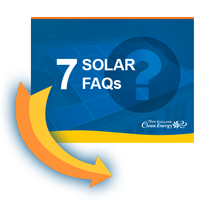Homeowners installing a solar electric system in Rhode Island have two good choices when it comes to picking a state program to defray the cost: fondly known as “REF” and “REG.” The difference in RI Solar Incentives can be a tad confusing so here’s an explanation and a comparison of the two.
REF (Renewable Energy Fund) Grant
Depending on your system’s size, this RI Solar Incentive pays for your solar with a grant of up to $7,000. These grants are awarded in “blocks” and the next block is actually scheduled to open July 19, 2021! Following these grants, currently the federal tax credit is sitting at 26% – meaning the government pays you 26% of your system’s price in the form of an income tax credit. Whatever isn’t paid for will be returned over the time span of your system’s life in electricity savings.
Recently, the Rhode Island Commerce Corporation and the Office of Energy Resources announced the addition of a new block, which starts in October, 2021. This means you’ll still get a huge solar benefit from the state if you sign up for solar in the next month or two.
Unfortunately, we will offer one word of caution: there is a “stopgap” block of grants meaning there’s only a certain amount offered and they will go fast. So if your installer (like New England Clean Energy) is ready to have their application submitted on the appropriate date, you will most likely receive the grants. 
REG (Renewable Energy Growth) Program
Under this state-approved program, you become a power producer supplying electricity to National Grid. Essentially, the utility pays you for the electricity you send to them, at a $.2875 rate set by the state.
Your current setup remains the same: the utility meter just tracks how much power you take from National Grid and they bill you for that monthly. A new, second meter tracks how much power you send them.
The value (in dollars and cents) of the solar power you produce is then applied to your electric bill. Depending on how much electricity you use and how much your system produces in a given month, you will receive a lower electric bill, a zero electric bill, or a zero electric bill plus a check. That’s a lot of savings!
Plus, you get the 26% federal tax credit with this option, too. Though, the income you get is taxable.
So, Which RI Solar Incentive Program is better?
It depends on your financial goals.
- The REF rebate is better if you want to lower the upfront cost of going solar.
- The REG program is better if you want the maximum financial benefit over time.
Not to mention, REF will award $2,000 for each project with an energy storage component that meets the eligibility requirements and a renewable energy component that is concurrently awarded funding through the REF Small-Scale program.
What better time to think about solar storage? With a solar-charged battery, instead of a heavy typical gas, propane, or diesel generator you can have a highly dependable, dynamic, whole-home contingency powered by the sun that provides big peace of mind. Not only will you have emergency backup during power outages but you can even store the power your solar generated during the day and use it when the sun’s not shining!
Many may say a battery solution is expensive. But, the utilities have come up with a mutually beneficial solution called Connected Solutions.
Each participating (Generac PWRcell) battery owner provides National Grid and Eversource with cleaner, more cost-effective power by joining other homeowners and businesses in a “virtual power plant.” This reduces peak demand periods. Participating in Connected Solutions saves National Grid and Eversource money. Which they then pass on to you in the form of incentives, potentially adding $8,000-15,000, while also lowering carbon emissions in your region. You get the 26% federal tax credit with this option, too.
If you liked this article, you may also like:
- Generac PWRcell: The Whole House Backup Solution
- What happens during a solar site visit?
- How to Read Your Electric Bill


 Download our 7 FAQs
Download our 7 FAQs


No comments yet. You should be kind and add one!
The comments are closed.